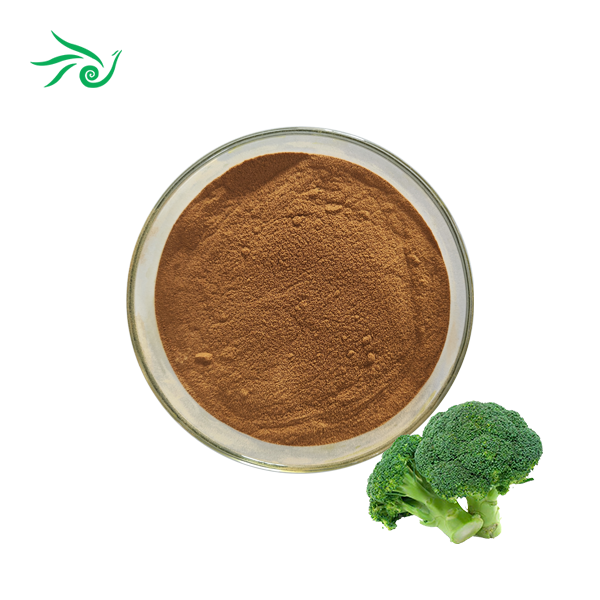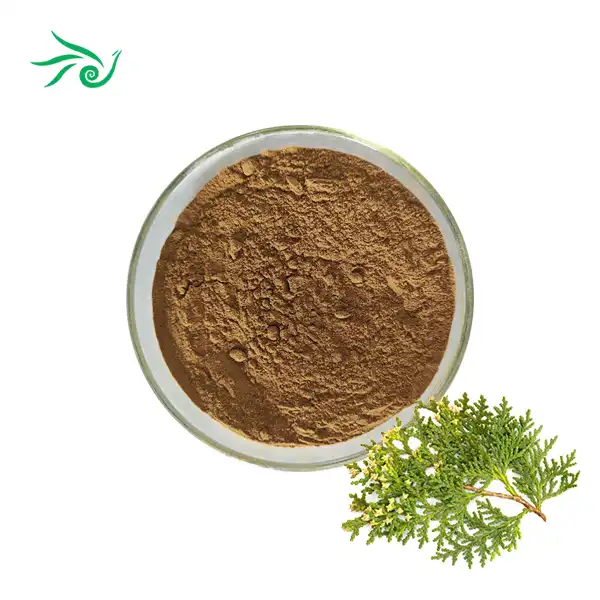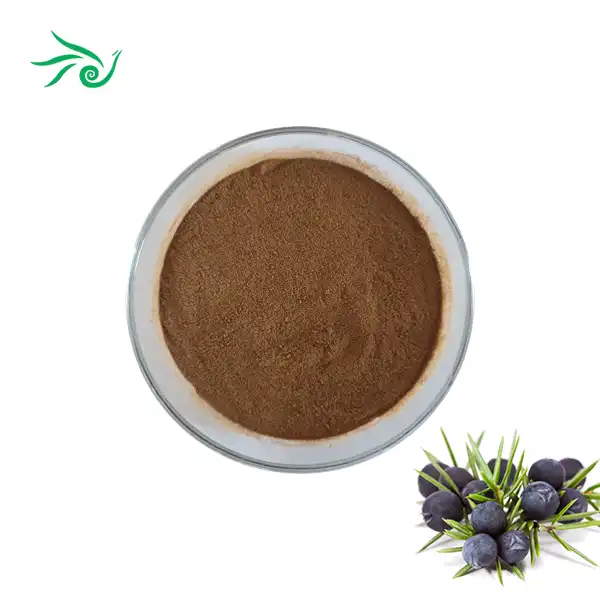What are the side effects of perilla?
2024-10-11 10:17:00
Perilla, a multipurpose herb steeped in traditional medical practices, has surged in popularity for its potential health advantages. Nevertheless, akin to any natural supplement, it is essential to be cognizant of both its benefits and possible side effects. This thorough guide explores the probable negative reactions connected with perilla extract, perilla seed extract, and perilla leaf extract, equipping you with the insights required to make well-informed choices regarding their utilization.
Perilla and Its Extracts
The Botanical Background of Perilla
Perilla frutescens, more commonly referred to as perilla or shiso, is an annual plant that belongs to the mint family. Originating from East Asia, this herb has been cultivated for thousands of years primarily for its leaves, seeds, and oil. The flavor of perilla is distinctive, characterized by a harmonious blend of mint, basil, and anise notes, which makes it a favored ingredient in various Asian culinary traditions.
Perilla Extract: A Closer Look
Perilla extract can be sourced from different sections of the plant, each carrying unique characteristics. Commonly utilized forms include perilla seed extract and perilla leaf extract. These extracts are notably abundant in bioactive substances like rosmarinic acid, luteolin, and alpha-linolenic acid, which significantly contribute to their potential health advantages.
Traditional and Modern Uses of Perilla
Traditionally, perilla was employed to treat various conditions such as respiratory ailments, digestive troubles, and allergies within the realm of medicine. Contemporary studies have further explored these traditional uses by examining perilla's possible anti-inflammatory, antioxidant, and neuroprotective functionalities. Yet, as usage expands, it becomes crucial to comprehensively understand its potential adverse effects.
Potential Side Effects of Perilla Extract
Allergic Response: A Major Consideration
A notable potential consequence of utilizing perilla extract involves allergic reactions. People with allergies towards plants in the mint family might face adverse effects upon intake of perilla or its derived extracts. The symptoms associated with an allergic response can span from mild to severe, encompassing:
- Skin rash or hives
- Itching or swelling particularly on facial areas, tongue, or throat
- Difficulty breathing or wheezing
- Nausea or vomiting
If you encounter any of these manifestations after consuming perilla extract, perilla seed extract, or perilla leaf extract, cease usage promptly and consult a healthcare professional.
Gastrointestinal Disturbances
Certain people might encounter gastrointestinal distress upon using perilla extracts. The digestive side effects could involve:
- Stomach discomfort or cramping
- Diarrhea
- Bloating or gas production
- Alterations in appetite
Although these manifestations are generally of mild intensity and tend to be temporary, ongoing or intense gastrointestinal symptoms should be assessed by a medical practitioner.
Interactions with Medications
Perilla extract may interact with certain medications, potentially altering their effectiveness or increasing the risk of side effects. Notable interactions include:
- Blood thinners: Perilla's high alpha-linolenic acid content may enhance the effects of anticoagulant medications, increasing the risk of bleeding.
- Diabetes medications: Perilla may affect blood sugar levels, potentially interfering with diabetes management.
- Immunosuppressants: The immunomodulatory effects of perilla could interact with medications designed to suppress the immune system.
It's crucial to consult with a healthcare provider before using perilla extract if you're taking any medications, particularly those mentioned above.
Specific Considerations for Different Perilla Extracts
Perilla Seed Extract: Unique Considerations
Perilla seed extract notably contains alpha-linolenic acid, an omega-3 fatty acid, which while offering potential health advantages, could also introduce specific adverse effects:
- Enhanced bleeding tendency: Consuming high quantities of alpha-linolenic acid might extend the time required for blood to clot and elevate the risk of bruising.
- Lipid peroxidation: In certain instances, a surplus intake of omega-3 fatty acids may result in lipid peroxidation, possibly leading to cellular damage.
- Gastrointestinal discomfort: Certain individuals might encounter more intense digestive issues with seed extract due to its elevated fat content.
Perilla Leaf Extract: Specific Side Effects
Perilla leaf extract carries a distinct array of substances relative to seed extract, featuring higher levels of rosmarinic acid and flavonoids among others. Here are some potential side effects associated specifically with the leaf extract:
- Photosensitivity: Certain individuals might show heightened sensitivity to sunlight following use of perilla leaf extract.
- Hormonal impact: Compounds found in perilla leaf extract may exhibit mild estrogenic activity, which could pose a risk for those with hormone-sensitive conditions.
- Respiratory issues: In isolated cases, inhalation of perilla leaf extract (as seen in aromatherapy contexts) might result in respiratory irritation for people who are sensitive.
Dosage-Dependent Side Effects
The severity and likelihood of experiencing side effects from perilla extract often correlate with the dosage consumed. While moderate use of perilla in culinary applications is generally considered safe, concentrated extracts may pose a higher risk of adverse effects. It's essential to adhere to recommended dosages and consult with a healthcare professional to determine the appropriate amount for your individual needs.
Minimizing Risks and Maximizing Benefits
Quality and Purity Considerations
The quality and purity of perilla extract products can significantly impact their safety profile. To minimize the risk of side effects:
- Choose reputable suppliers: Opt for the product products from established, reputable manufacturers with a track record of quality control.
- Look for third-party testing: Products that have undergone independent laboratory testing for purity and potency may offer additional assurance.
- Check for additives: Some products may contain additives or fillers that could contribute to side effects. Review ingredient lists carefully.
Proper Usage and Precautions
To maximize the potential benefits of the product while minimizing risks:
- Start with low doses: Begin with a lower dose and gradually increase as tolerated to assess your individual response.
- Monitor for side effects: Pay attention to any changes in your health or well-being after starting the product.
- Combine with a balanced diet: Perilla extract should complement, not replace, a healthy, balanced diet.
- Consider cycling: Some experts recommend periodic breaks from supplement use to prevent tolerance and reduce the risk of long-term side effects.
Special Populations and Contraindications
Certain groups should exercise particular caution or avoid perilla extract altogether:
- Pregnant and breastfeeding women: Due to limited research on safety in these populations, it's generally advised to avoid perilla extract during pregnancy and lactation.
- Individuals with bleeding disorders: The potential blood-thinning effects of perilla may exacerbate bleeding issues.
- People with scheduled surgeries: Discontinue use of the product at least two weeks before any planned surgical procedures to reduce bleeding risk.
- Those with known allergies to mint family plants: Individuals with allergies to plants like basil, mint, or sage should approach perilla with caution due to potential cross-reactivity.
Conclusion
While perilla extract offers numerous potential health benefits, it's crucial to approach its use with an understanding of possible side effects. By being aware of allergic reactions, gastrointestinal disturbances, and potential drug interactions, users can make informed decisions about incorporating the product into their health regimen. As with any supplement, consulting with a healthcare professional and starting with conservative doses can help minimize risks and maximize potential benefits.
Contact Us
Are you interested in exploring the potential of the product for your health and wellness needs? Shaanxi Huachen Biotech Co., Ltd. offers high-quality perilla extracts backed by rigorous quality control and extensive research. For more information about our products or to discuss how we can meet your specific requirements, please contact us at dongqian@sxhcbio.com. Let us help you harness the power of nature for your health and wellness journey.
References
Chen, L., et al. (2019). "Perilla frutescens (L.) Britton: A review on its phytochemistry, pharmacology, and toxicology." Journal of Ethnopharmacology, 241, 111975.
Asif, M. (2011). "Health effects of omega-3,6,9 fatty acids: Perilla frutescens is a good example of plant oils." Oriental Pharmacy and Experimental Medicine, 11(1), 51-59.
Igarashi, M., & Miyazaki, Y. (2013). "A review on bioactivities of perilla: Progress in research on the functions of perilla as medicine and food." Evidence-Based Complementary and Alternative Medicine, 2013, 925342.
Kwon, Y. S., et al. (2014). "Perilla leaf extract ameliorates obesity and dyslipidemia induced by high-fat diet." Phytotherapy Research, 28(4), 575-581.
Yamazaki, M., et al. (2007). "Safety assessment of cooked perilla seeds." Food and Chemical Toxicology, 45(8), 1375-1379.
Yu, H., et al. (2017). "Perilla frutescens leaf extract inhibits mite major allergen-induced atopic dermatitis in NC/Nga mice." International Immunopharmacology, 50, 362-370.
Send Inquiry
.webp)





